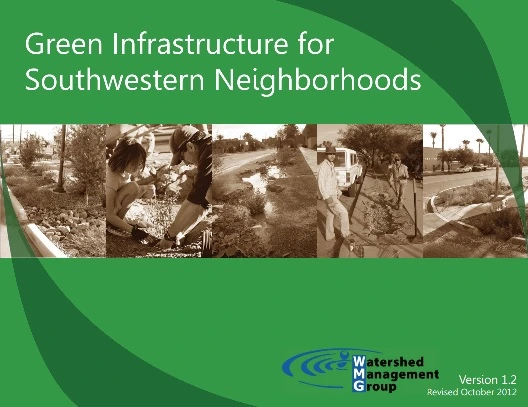
Green infrastructure (GI) refers to constructed features that use living, natural systems to provide environmental services, such as capturing, cleaning and infi ltrating stormwater; creating wildlife habitat; shading and cooling streets and buildings; and calming traffic.
Green infrastructure is a strategy that a growing number of communities are using to manage stormwater more sustainably, while using that water to grow vegetation that provides myriad benefi ts. GI strategies were developed in temperate areas of North America and are only just beginning to be adapted for use in the hot, arid areas of the Southwestern U.S. These areas face long periods of drought interspersed with intense rainfall that can make implementing GI challenging.
This manual is for community and neighborhood leaders, advocates Th is manual provides guidelines for retrofi tting existing neighborhood streets, right-of-ways and parking lots with GI practices. and professionals who want to use green infrastructure strategies to improve watershed conditions and community livability in Southwestern neighborhoods.
This guide draws on Watershed Management Group’s experience working with neighborhoods and local governments to install GI in the Southwest. Design specifi cs are given only for conceptual understanding, and will always require adaptation based on local site conditions and government regulations.
Keywords: water harvesting, green infrastructure, curb cuts, chicanes, medians, traffic circles

